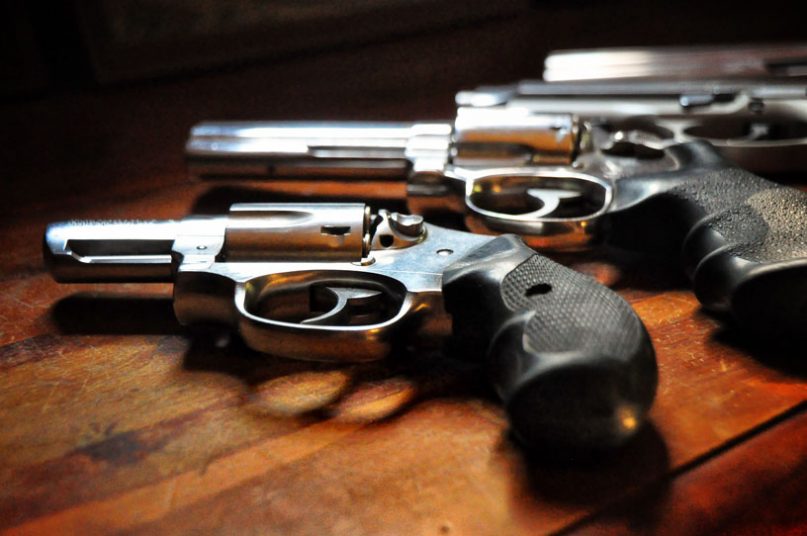This is a mournful story, for a mournful time.
It begins on Shavuot morning fifty years ago. That was my confirmation ceremony at Suburban Temple in Wantagh, New York, in a class of more than a hundred kids.
There is mourning here, as well. Suburban Temple is no more; it is now Temple B’nai Torah, the result of a merger with several other synagogues. That is testimony to our demography.
And confirmation classes of more than a hundred kids has gone the way of the Nehru jacket. That is testimony to our sociology.
At my confirmation in May, 1970, we all wore black arm bands. There were readings in the service that protested the Viet Nam war. I played guitar while a classmate sang “When I’m Gone” by Phil Ochs.
Why the arm bands? Because two weeks before the ceremony, four students were killed at Kent State University in Ohio, while protesting the US invasion of Cambodia.
The pain was especially poignant for us who lived in the Plainview, Long Island area. For Jeffrey Miller, one of the slain students, was from Plainview – only four years older than us, and many of us knew his family.
Allison Krause, Jeffrey Miller, Sandra Lee Scheuer, and William Schroeder. They were nineteen and twenty years old.
On the day before her death, Ms. Krause had put a flower in a National Guardsman’s rifle, saying “flowers are better than bullets.”
The Russian poet, Yevgeny Yevtushenko, commemorated her death:
Of course:
Bullets don’t like people
who love flowers,
They’re jealous ladies, bullets,
short on kindness.
Allison Krause, nineteen years old,
you’re dead
for loving flowers.When, thin and open as the pulse
of conscience,
you put a flower in a rifle’s mouth
and said,
“Flowers are better than bullets,”
that
was pure hope speaking.Give no flowers to a state
that outlaws truth;
such states reciprocate
with cynical, cruel gifts,
and your gift, Allison Krause,
was the bullet
that blasted the flower…
Had the four students lived, they would have been 69 and 70 years old. We might imagine that by now they would have been grandparents.
Let us note: nine other students were injured; one was paralyzed.
This half century ago loss – why is it even worth remembering? Especially now?
Because, for me and for many of us, it was, to quote Don Henley, the end of the innocence.
Oh, yes, this was seven years after the assassination of President John F. Kennedy. This was two years after the assassinations of Rev. Martin Luther King and Senator Robert Kennedy.
Yes. Because it wasn’t someone famous who died.
This time, it was people just like me.
Here is what I failed to know at that time, and something that I did know, and never thought enough about.
What I failed to know: Three of the four students were Jewish — Miller, Krause, and Scheuer. That was long before I looked at tragedies and counted Jewish victims, or looked at achievements and counted Jewish contributions. I have been unable to find whether Jewish newspapers at the time noted this tragic coincidence. I have no memory of these deaths touching Jews in any particular way, appearing in rabbis’ sermons.
In retrospect, it made it even more remarkable. In 1970, Kent State University was not known as a hotbed of Jewish enrollment. In 1975, the university inaugurated a Jewish studies program. There is Hillel and Chabad on campus.
What I failed to know: Two of the students were killed because they just happened to be in the wrong place at the wrong time. They were not protestors. It makes me think of the utter randomness of existence, the perennial relevance of the Unetaneh Tokef on the Days of Awe: “Who shall live and who shall die?”
Kent State was a foreshadowing, then, for September 11, when being on a certain plane or at work at a certain time was enough to condemn you to death – or, to have missed the flight or calling in sick would have saved your life. Or, today: to have crossed paths with the wrong person who coughed in your direction, or touched the wrong surface.
What I knew and forgot: It was not as if the Kent State students were the only victims on a college campus in May, 1970. At that time, I had heard about something that happened eleven days later, at Jackson State College (now University) in Jackson, Mississippi. Police confronted black students who were protesting violently, opened fire, and killed two students: Phillip Lafayette Gibbs, 21, a junior, and James Earl Green, 17, a high school senior. Twelve others were wounded.
The President’s Commission on Campus Unrest stated: “…The 28-second fusillade from police officers was an unreasonable, unjustified overreaction…A broad barrage of gunfire in response to reported and unconfirmed sniper fire is never warranted.” The College named the area of the shootings Gibbs-Green Plaza.
But, since that moment, how often have you heard about the Jackson State killings? Can you understand that American blacks and others see it as yet another chapter in American violence against blacks?
Let us call May 4 what we should have called it, even then – the yahrzeit of our American innocence, the realization that neither the academic sanctuaries of colleges, nor public schools in Parkland, Florida and countless others, nor the real sanctuaries of synagogues in Pittsburgh and Poway, could provide us with metaphoric bullet proof vests.
Some people have taken up gardening during this pandemic. Some are growing flowers.
That, to quote the Russian poet, is “pure hope speaking.”
It is a good start.






